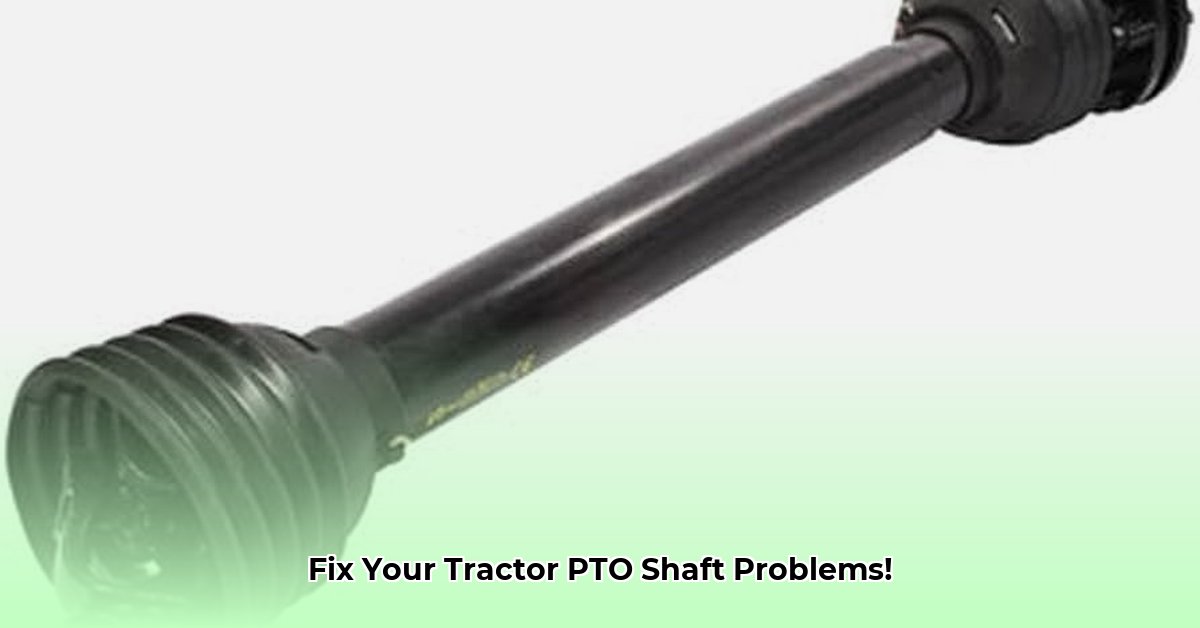
Your tractor's PTO shaft is the powerhouse connecting your tractor's engine to implements like mowers, balers, and tillers. Understanding its components and maintenance is crucial for efficient operation and safety. This guide provides expert advice on identifying parts, troubleshooting problems, and ensuring your PTO shaft remains in top condition. For more on tractor hydraulics, see this helpful resource: Tractor Hydraulics.
Understanding Tractor PTO Shaft Components
The PTO shaft isn't a single piece but a system of interconnected parts. Each plays a vital role in power transmission and safety. Let's explore the key components:
The PTO Shaft: This is the rotating rod transmitting torque (rotational force) from the tractor to the implement. Its length varies depending on the application, with longer shafts requiring extra care.
Universal Joints (U-joints): These flexible connectors compensate for angular misalignment between the tractor's PTO and the implement, allowing smooth power transfer. Without them, power transmission would be jerky and inefficient.
Safety Shields: These protective covers are vital safety features, preventing contact with the rotating shaft. Operating a PTO shaft without shields is extremely dangerous.
Bearings: These support the shaft, minimizing friction and vibration. Worn bearings lead to excessive vibration and eventual shaft failure.
Slip Clutches: These safety devices protect the drivetrain from damage by allowing controlled slippage during overloads or jams. They're a critical safety precaution.
Troubleshooting Common PTO Shaft Problems
Diagnosing PTO shaft issues requires a systematic approach. Here's a step-by-step guide:
Visual Inspection: Examine the entire assembly for obvious damage like bent shafts, cracked shields, or worn U-joints.
Feel Test: Gently check for excessive play or movement in the bearings or U-joints. Looseness indicates wear.
Listen for Unusual Noises: Grinding, whining, or clicking sounds point to worn parts. A high-pitched squeal might signal lubrication problems.
Vibration Check: Excessive vibration signals a problem like worn bearings or misalignment. Address this promptly.
PTO Shaft Maintenance and Safety Procedures
Regular maintenance is key to extending your PTO shaft's lifespan and ensuring safe operation.
Routine Maintenance:
Regular Greasing: Lubricate U-joints and bearings according to the manufacturer's recommendations. Use the correct type of grease.
Shield Inspection: Regularly check safety shields for damage and replace any damaged parts.
Shaft Inspection: Periodically inspect the shaft for bending, wear, or corrosion.
Safety First:
Power Down: Always shut off and disconnect the tractor's PTO before working on the shaft or connected equipment.
Protective Gear: Wear safety glasses and gloves when working on the PTO shaft.
Secure the Tractor: Engage the parking brake.
Choosing the Right Replacement Parts
Selecting the correct replacement parts is paramount for safe and efficient operation.
Model Match: Ensure parts are compatible with your tractor model. Using incorrect parts can lead to damage.
Size Verification: Check the shaft's length and diameter to ensure it matches the original.
Shield Compatibility: Verify the safety shields fit properly and securely.
Conclusion
Proper maintenance and careful part selection are crucial for ensuring your PTO shaft's longevity and your safety. By following these guidelines, you can keep your tractor's power transfer system running smoothly and efficiently for years to come. Investing in quality parts and performing regular maintenance minimizes downtime and prevents costly repairs. Remember, safety should always be your top priority.